Oman, a hidden gem of the Arabian Peninsula, is a land of diverse landscapes, rich history, and warm hospitality. From golden deserts and lush green wadis to historic forts and bustling souks, Oman offers a unique travel experience that blends ancient traditions with modern comforts. Whether you are exploring its stunning coastline, majestic mountains, or vibrant cities, Oman never ceases to amaze travelers. This guide will take you through some of the best places to visit in Oman, highlighting its must-visit tourist attractions and cultural wonders.
The Introduction of Oman
Oman, officially known as the Sultanate of Oman, is a captivating destination located in the southeastern corner of the Arabian Peninsula. It is bordered by the United Arab Emirates, Saudi Arabia, and Yemen, with a long coastline along the Arabian Sea and the Gulf of Oman. The country boasts a remarkable blend of natural beauty, historical heritage, and modern development.
Oman’s landscapes range from vast deserts and high mountain ranges to picturesque wadis and serene beaches. Its capital, Muscat, is a vibrant city that reflects a perfect mix of old and new, where traditional architecture coexists with contemporary structures. The country’s rich history, dating back thousands of years, is evident in its forts, castles, and UNESCO-listed sites. Oman is also famous for its traditional Bedouin culture, warm hospitality, and the production of high-quality frankincense, which has been a part of its economy and heritage for centuries.
Whether you’re an adventure seeker, history enthusiast, or nature lover, Oman has something special for every traveler.
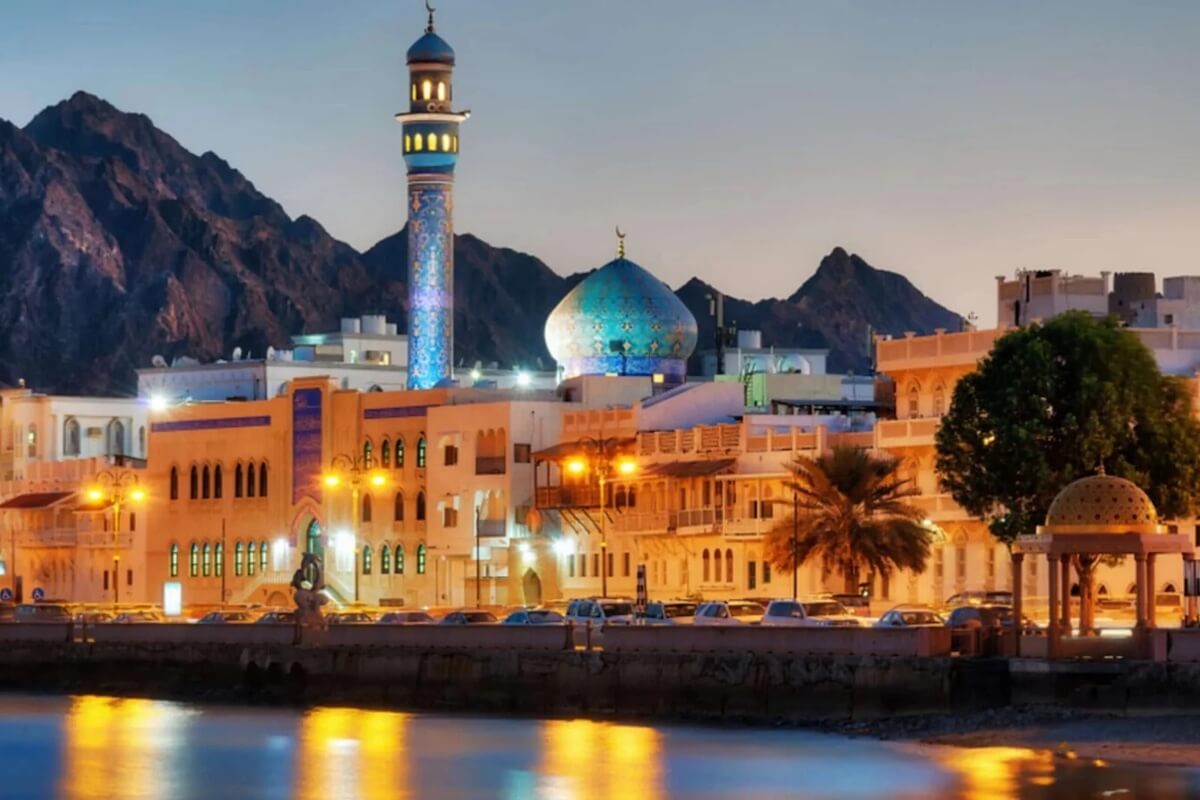
Top 5+ Must-Visit Tourist Attractions – Best Places to Visit in Oman
Muscat
Muscat, the capital of Oman, is a must-visit destination that blends cultural heritage with modern attractions. The city is known for its grand mosques, lively souks, and stunning waterfront views.
- Sultan Qaboos Grand Mosque: One of the largest mosques in the world, featuring intricate Islamic architecture, a breathtaking chandelier made of Swarovski crystals, and the second-largest handwoven Persian carpet in the world. Visitors can explore its vast prayer hall and admire the serene atmosphere.
- Mutrah Souq: A bustling traditional market where visitors can shop for Omani souvenirs, including silver jewelry, frankincense, traditional garments, and beautifully crafted daggers (khanjars). The market, with its maze-like alleys, is a sensory delight filled with exotic aromas and colorful displays.
- Royal Opera House Muscat: A magnificent venue showcasing world-class performances and Omani architectural brilliance. It is a cultural hub for music, arts, and theatrical performances, attracting talent from around the world.
- Al Jalali and Al Mirani Forts: These twin forts, built by the Portuguese in the 16th century, stand guard over the harbor of Muscat. They offer panoramic views of the city and the Gulf of Oman and provide a glimpse into Oman’s military history.
- Qurum Beach: A popular spot for relaxation, water activities, and stunning sunset views. Visitors can enjoy beachside cafés, jet skiing, and long walks along the soft golden sands.
- Bait Al Zubair Museum: A museum offering deep insights into Omani culture, history, and traditional artifacts, including ancient weapons, costumes, and household items that reflect the country’s rich heritage.
- Al Alam Palace: The ceremonial palace of the Sultan, surrounded by picturesque gardens and historic forts. Although visitors cannot enter the palace, its unique façade with gold and blue pillars makes it a stunning sight to behold.
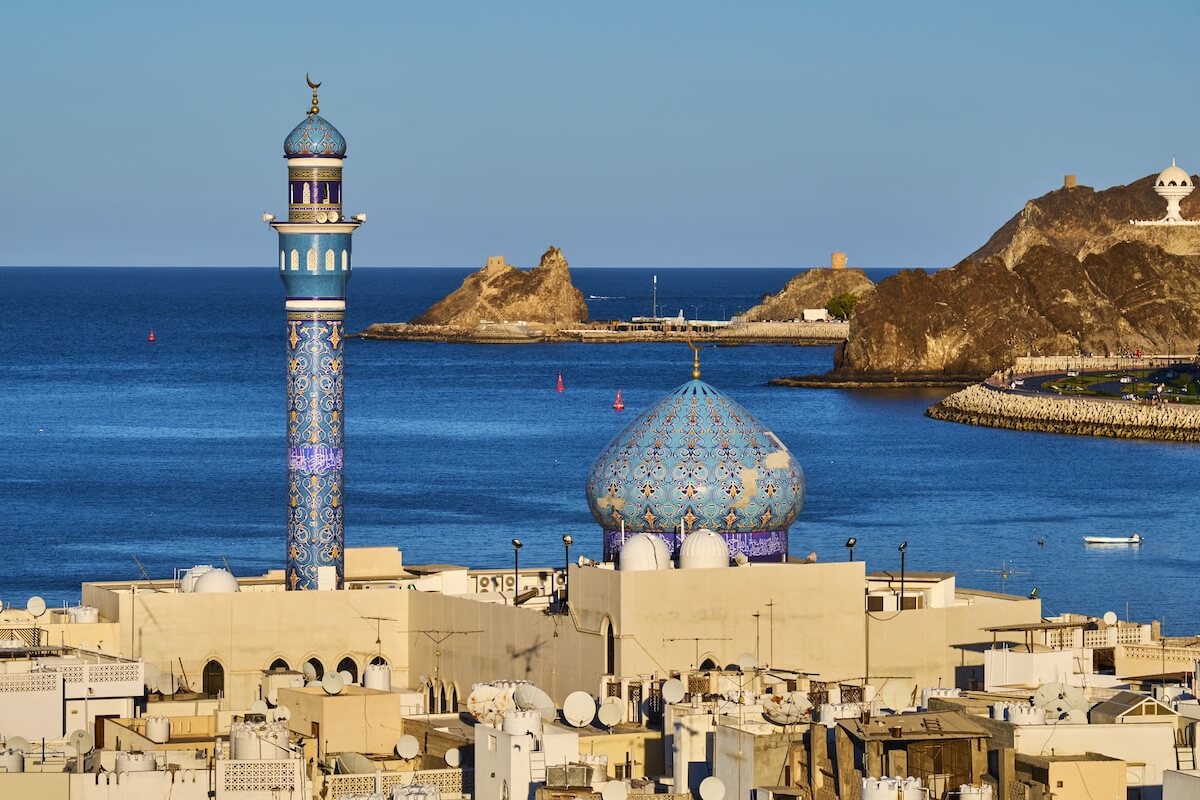
Salalah
Located in southern Oman, Salalah is famous for its lush greenery, beautiful beaches, and historical sites. It is particularly popular during the monsoon season (Khareef), which transforms the region into a tropical paradise.
- Al Mughsail Beach: Known for its dramatic cliffs, golden sands, and natural blowholes that spray seawater high into the air, making it a mesmerizing natural wonder.
- Frankincense Land Museum: A UNESCO-listed site that showcases the history of Oman’s famous frankincense trade, which was one of the world’s most valuable commodities in ancient times. Visitors can learn about the centuries-old trade routes and the significance of frankincense in Omani culture.
- Wadi Darbat: A picturesque wadi featuring waterfalls, greenery, and wildlife, especially during the monsoon. The wadi is an excellent place for hiking, picnicking, and taking boat rides through its serene waters.
- Sultan Qaboos Mosque: A stunning mosque in Salalah, reflecting Islamic architectural beauty, with intricate detailing and serene prayer halls open to visitors.
- Taqah Castle: A historical fort that provides insight into Oman’s past rulers, traditional defense structures, and daily life in ancient Oman. Visitors can explore its watchtowers and traditional Omani rooms.
- Sumhuram Ruins: An ancient archaeological site that was once a major trading hub for frankincense. The ruins provide a glimpse into Oman’s rich maritime and commercial history, with remnants of old stone structures and inscriptions.
- Ayn Razat and Ayn Athum: Natural springs offering scenic beauty, lush greenery, and tranquil picnic spots. These sites are ideal for nature lovers looking to experience the serenity of Oman’s hidden gems.
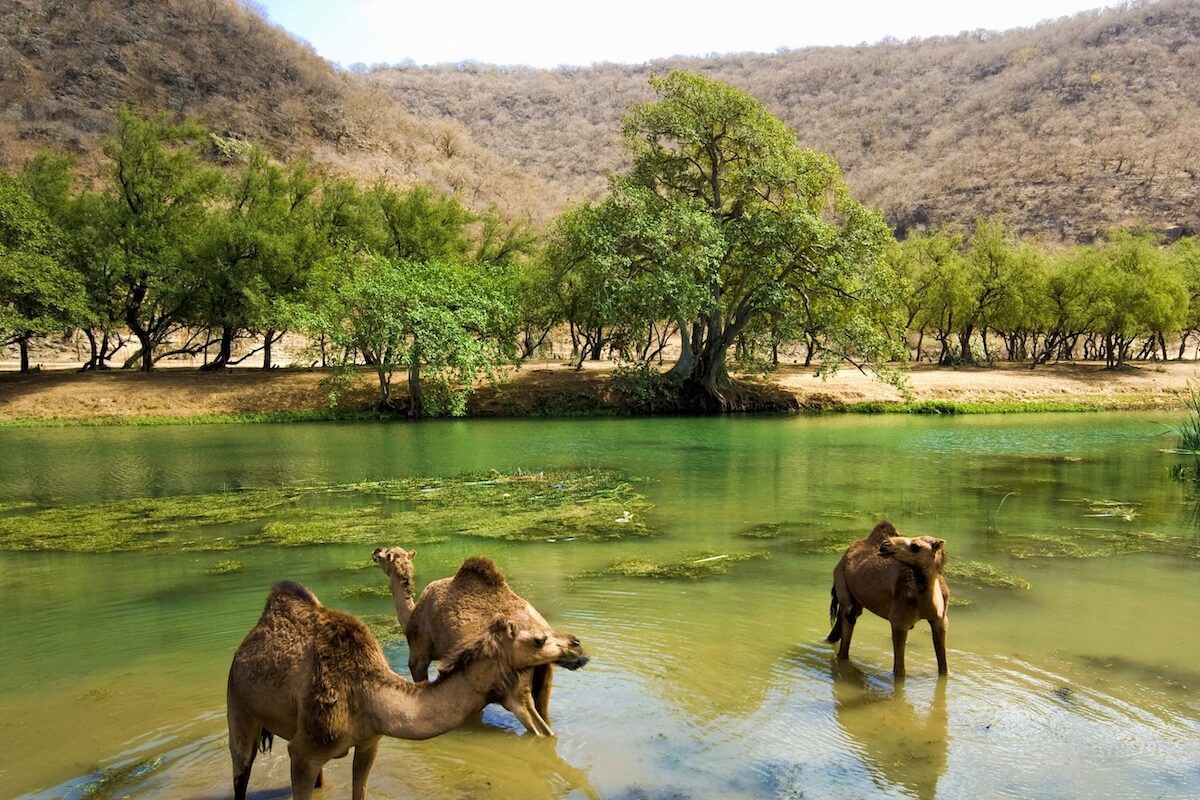
Nizwa
Nizwa, known as the “Pearl of Islam,” is a city steeped in history and culture. It was once the capital of Oman and remains a significant cultural hub.
- Nizwa Fort: A massive fort with a towering cylindrical watchtower offering breathtaking views of the city. The fort’s architecture and defensive design reflect Oman’s military history and strategic importance.
- Nizwa Souq: A bustling marketplace famous for silverware, pottery, and traditional Omani daggers (khanjars). The market is especially lively on Fridays during the famous goat auction, where local farmers trade livestock.
- Jebel Akhdar: Also known as the Green Mountain, this area is ideal for hiking and enjoying the cool climate and terraced farms. The region is famous for its pomegranates, roses, and traditional Omani villages that dot the landscape.
- Al Hoota Cave: A fascinating natural cave system with an underground lake home to rare blind fish. The cave offers a unique geological experience with stunning stalactites and stalagmites, making it a must-visit for nature enthusiasts.
- Falaj Daris: A UNESCO-listed irrigation system showcasing Oman’s traditional water management techniques, essential for sustaining agriculture in the desert climate.
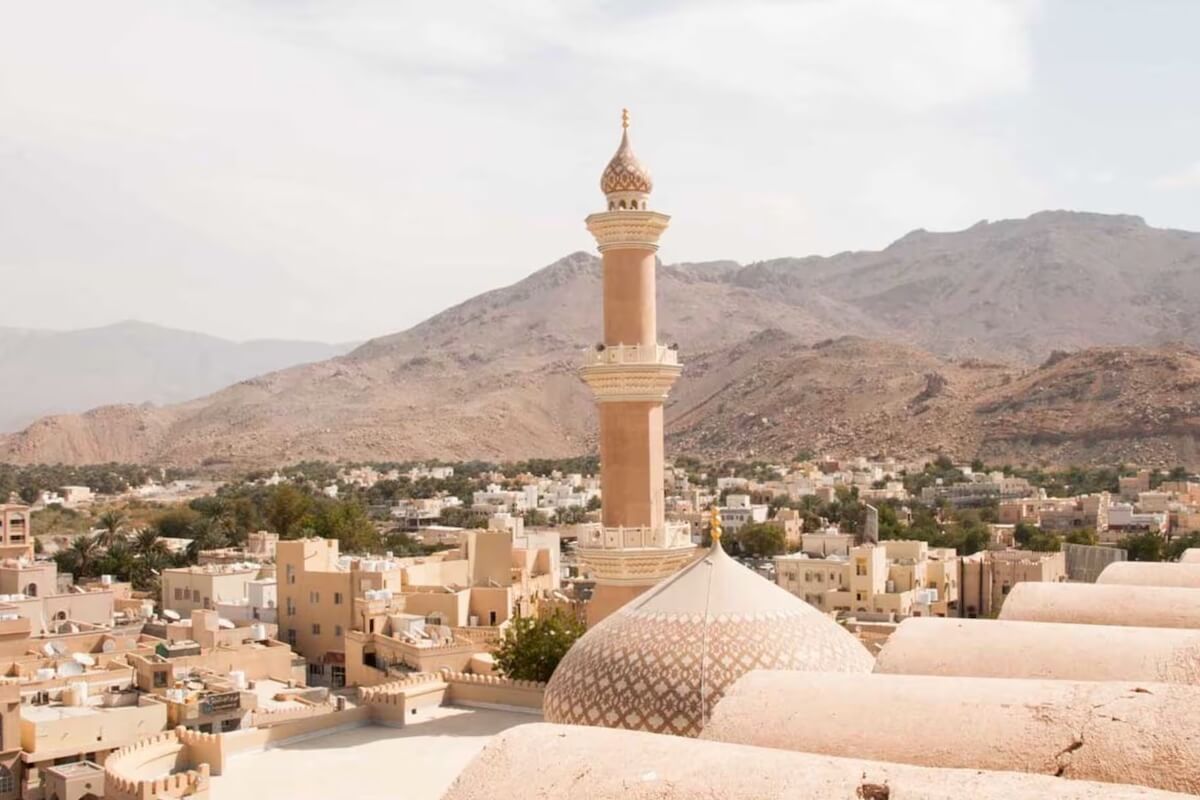
Musandam Peninsula
The Musandam Peninsula, often referred to as the “Norway of Arabia,” is renowned for its dramatic fjords and crystal-clear waters. It is a paradise for adventure seekers and nature lovers. Top attractions include:
- Khasab Fort: A historic fort with stunning views of the surrounding mountains and sea. It also has an interesting museum showcasing local history and maritime artifacts.
- Dhow Cruise: A traditional boat tour offering breathtaking views of Musandam’s fjords and a chance to spot dolphins swimming in the waters. This is one of the most unforgettable experiences in Oman.
- Jebel Harim: The highest mountain in Musandam, offering panoramic views, ancient petroglyphs, and off-road adventures through rugged terrain.
- Telegraph Island: A small island with a rich history, perfect for snorkeling and diving. The island was once a vital telegraph relay station during British colonial rule, making it an intriguing site for history lovers.

Oman is a destination that promises an unforgettable travel experience. Whether you are fascinated by history, captivated by natural beauty, or seeking adventure, Oman’s diverse landscapes and rich cultural heritage make it an ideal place to explore. From the vibrant city of Muscat to the serene beauty of Salalah, the historic forts of Nizwa, and the dramatic fjords of Musandam, Oman offers something for every traveler. Plan your journey today and discover the must-visit tourist attractions in Oman!

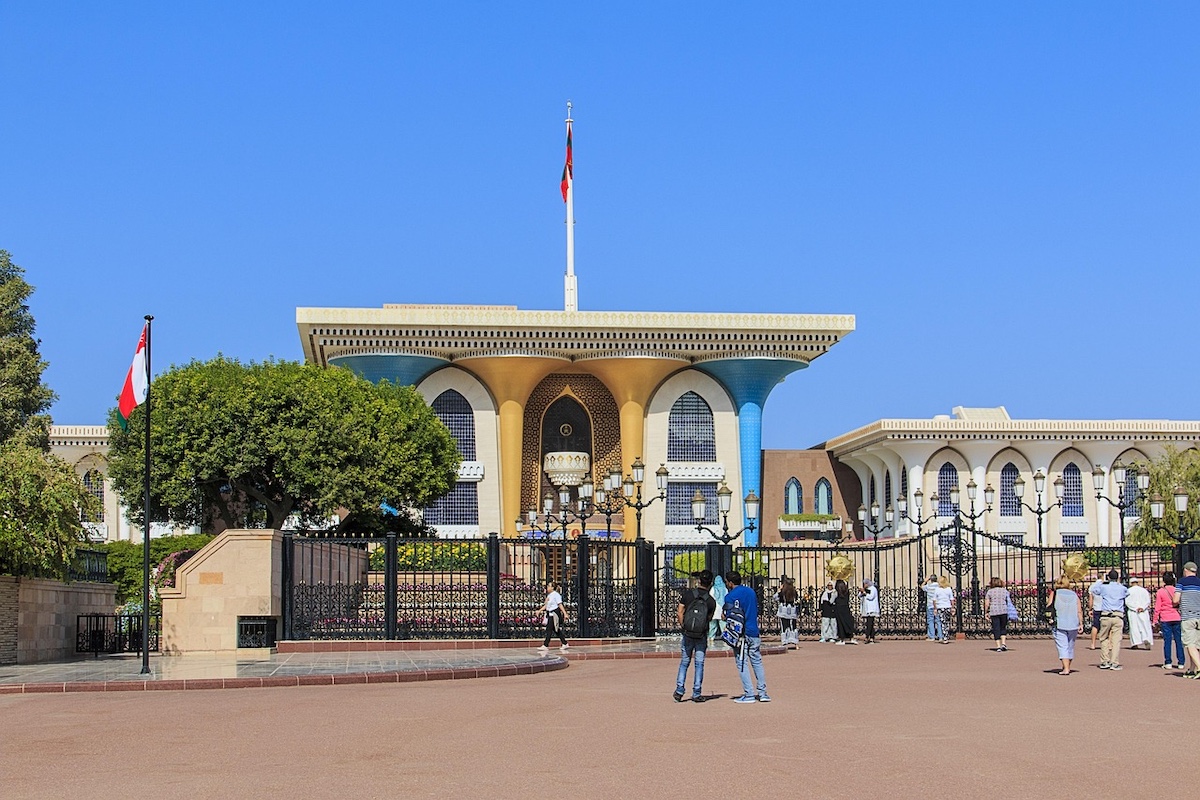
0 Comment